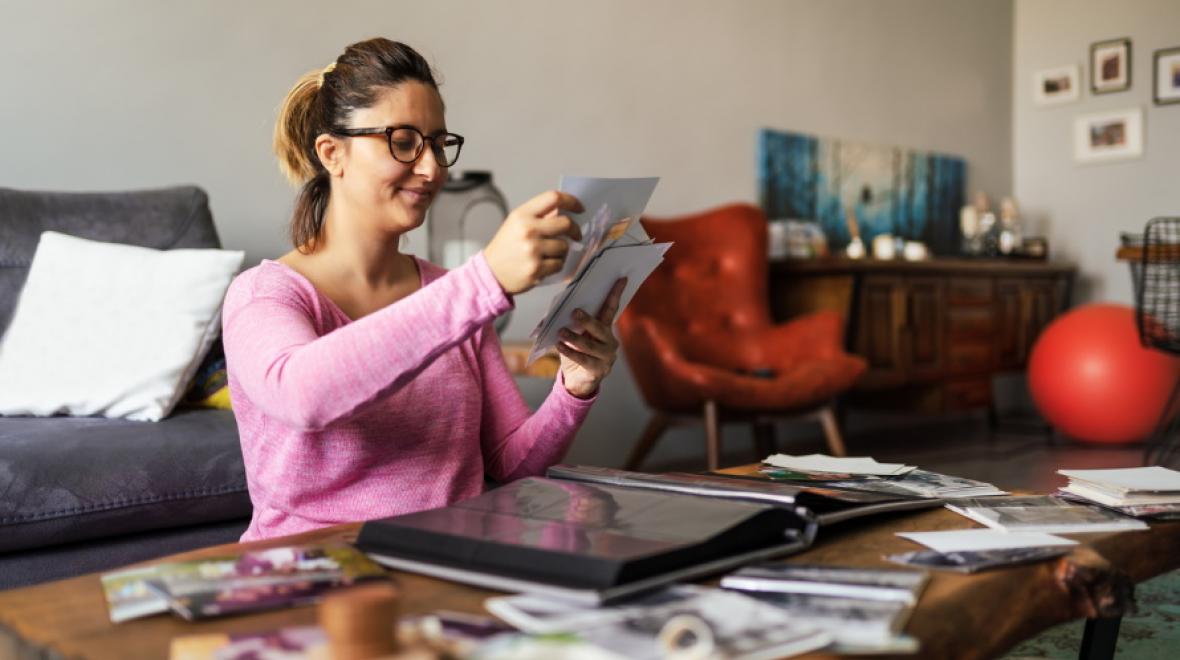
Children are incredible. They have the power to do so many things. They even have the power to transform your living space. They can turn it into a space station, the Wild West, a garbage dump, a bottle storage facility, even a painting shed. Sometimes, all at once! But if you’re tired of living on top of each other because you can’t find the couch under all that laundry and kid fun, don’t despair. We sat down with some interior designers and home organization experts to uncover smart, cost-effective tips and guiding principles that will help you defend your home from encroaching clutter and put a little style back into your life. Who said the home you have right now can’t be your dream home?
1. Edit your life.
Problem: Your stuff is closing in on you.
Spaces: Basements, attics, closets, junk drawers, random surfaces
Goal: Clear surfaces, gain storage, achieve a feeling of being able to breathe.
This first step to space reinvention is a no-brainer that we all recognize as important, but few of us actually know how to do: declutter. You’ve got a basement full of boxes full of … stuff. How do you even begin?
Cody Strauss of Clearspace Seattle offers excellent guidance to cutting the clutter. She recommends separating things into four groups: things you love, things you need, things you need but only use a few times a year and everything else.
That last group? Yeah, get rid of that stuff. You are paying too much in mortgage or rent to waste precious space storing stuff that you don’t love, want or need. If you haven’t used it in a year, chances are you will never use it.
After you’re done editing, defend your reclaimed space from another onslaught of garbage and clutter. Renate Ruby of Renate Ruby Design has some great words of advice for this:
“Stop shopping for entertainment. Curate what comes into your life. When something comes in, something must go out to make room for it. Having a tidy space is a lifestyle, and there is no system that can keep too many things orderly.”
2. Use the good dishes.
Problem: You’re afraid to enjoy your things.
Spaces: Kitchen, dining room
Goal: Love the things you use every day and create more space.
Most people have two sets of dishes: one nice set for when company comes and a junky, mismatched set for everyday use. Ruby’s suggestion? Get rid of the junky ones. You don’t need to save the fancy dishes to pass down to your kids one day — chances are they won’t want them anyway. You’ve had them this long, why not use them? Kids don’t have to eat off plastic. They can learn to eat off china just as adults do.
A good set of dishes will fit neatly in your cupboards, unlike all those mismatched ones. You’ll love looking at tidy cupboards, and you can use the extra space you’ve cleaned out for stuff you’d rather keep off the counter, such as the blender that only comes out when you’re making margaritas or that weird air fryer your sister gave you.
3. Cut down on kitchen chaos and get a peg rack.
Problem: The appliances aren’t ready to use when you are ready to use them.
Space: Kitchen
Goal: Clear the dishwasher, organize the dishware.
Imagine this scenario: You empty the dishwasher, but the plastic ware isn’t dry yet, so you leave it on the counter. Of course you forget about it until later, when your partner walks into the kitchen to make a sandwich, but can’t because he or she has to clear the counter first. Instead of fessing up, you feign surprise and blame it on the kids.
Don’t look so innocent — we’re all guilty of this one. It’s a legitimate problem, with two obvious (and annoying) solutions: the extreme drying, non-eco-friendly setting on your dishwasher or a dedicated dishrack that takes up precious real estate on your kitchen counter.
Our not-so-obvious solution? Go vertical! A peg or bottle-drying rack can solve this problem easily. Hung on the side of a cupboard, a peg rack can store those watery containers up and off the counter, leaving you free to brag about the great job you’ve done emptying the dishwasher. You will have to remember to put it all away when it’s dry though, so good luck with that.
4. Mountains of clean kids’ laundry? Stop folding it.
Problem: There aren’t not enough hours in the day to keep house.
Spaces: Laundry room, bedrooms
Goal: Get the clothes put away faster.
That sounds scandalous even reading it in your head, doesn’t it? But seriously, stop it. It’s the worst part of laundry anyway, and most kids don’t care. Unless you have that rare one who complains about his bow tie being crooked in his school pictures (looking at you, my dear nephew), why are you cycling through all that extra work? Stop with the crazy-making! Separate clean clothes right out of the dryer into bins or extra roomy dresser drawers by type (tops, bottoms, socks, undies) and voilà! No more laundry mountains.
5. Kid art — it’s the bane of parents everywhere.
Problem: Too many options, too much guilt.
Spaces: Hallways, walls, random surfaces, under the beds (we know you store stuff there — you aren’t fooling us!)
Goal: Learn to choose a few things you can really focus on and love.
There are a million ways to deal with your kid’s art. You can stick it to the fridge. You can stick it in a drawer. Some parents are even brave enough to stick it in the recycling bin after the kids go to sleep. But how exactly do you go about deciding what to keep? Organizing guru Sarah Grigsby has a great answer: “Resist holding onto items for your children. Gather up all those papers, awards and kid art and go through it together. Allow them to be involved with what they want to keep. It not only helps cut down on the clutter, but also helps teach them good habits so they can be more organized adults.”
For display, give each child a section of wall and three to five empty frames. Let them choose which pieces go in the frames to be hung up — preferably in a prominent spot, say above the living room couch or fireplace mantel. Take pictures of the pieces that don’t make the cut, then lovingly recycle them. Repeat the process as necessary, swapping out new favorites for old. This helps keep the stockpile low and encourages your children to develop the valuable skill of curation — knowing what to keep and what to cull.
6. Make it easy to clean up.
Problem: Their crap is everywhere!
Spaces: Every room in the house
Goal: Put toys and projects out of sight when not in use, and teach good habits.
We don’t know about you, but in our houses, if something has to be walked into another room to be put away, it isn’t going to happen. Make it easy for your family members to pick up after themselves by providing storage in the room where the items are needed. Do you homeschool at the dining room table? A tidy bookshelf in the corner will help you keep school supplies off the table much easier than a bookshelf in the basement. A vintage trunk can do double duty as a funky side table and a Lego war chest. A footstool with a flip-up lid or a coffee table with storage are great places to put your latest knitting project or family board games.
The take-away message: Make conscious decisions.
Style may sway you into a purchase, but design and efficiency are the keys to living in a comfortable house. Consider carefully how you use each area of your home and provide storage that makes sense. If you can’t use something (or don’t want to), then give it to someone who needs it on your local Buy Nothing group.
Now that you’ve organized your home and your stuff, how should you approach decorating your domicile with items that are truly meaningful and making your family space feel happier and cozier? Follow these tips to display cherished items and memories, avoid common pitfalls and adorn your home with intention.
Souvenirs: Treasures or just more clutter? Nothing says “beach vacation” quite like a car full of rocks and shells, right? But what do you do with all those found treasures when you get home? Items found in nature are easy to display on a window sill in a funky vase or jar. If you have the time and don’t mind getting a bit messy, you can even set them into cement. Stepping-stones are a fun and permanent way to display all those found pieces, and there’s a bonus: Stepping stones live outside! A beautiful wall unit can pay homage to family adventures and travels.
Ephemera: All those tiny treasures such as movie tickets and greeting cards? Scrapbooks are a lifesaver for those. Contrary to current trends, scrapbooks do not have be embellished with die-cut gold leaf and braided unicorn hair. A few glue dots and a quick note of description and you’ve got a coffee-table book full of memories that your children will want to look through all the time.
Collections: There are a few ways to display smaller items without creating a cluttered look. Use a nice tray to display collections in groups. The tray keeps everything tidy and allows you to move the entire collection at once for dusting and cleaning. Smaller items can also be displayed in shadow boxes — deep, framed boxes that hang on the wall or sit on a side table or mantel. Just like kid art, these collections can be swapped out as desired.
Bonus round: Action figures! If you’ve got a huge collection of [cough] vintage “Star Wars” toys [cough], consider an actual display cabinet to display it. Who says china cabinets need to display china? You’re using all those dishes now anyway, right?
You might also like: |
Editor’s note: This article was originally published in December 2016, and updated in May 2021.











